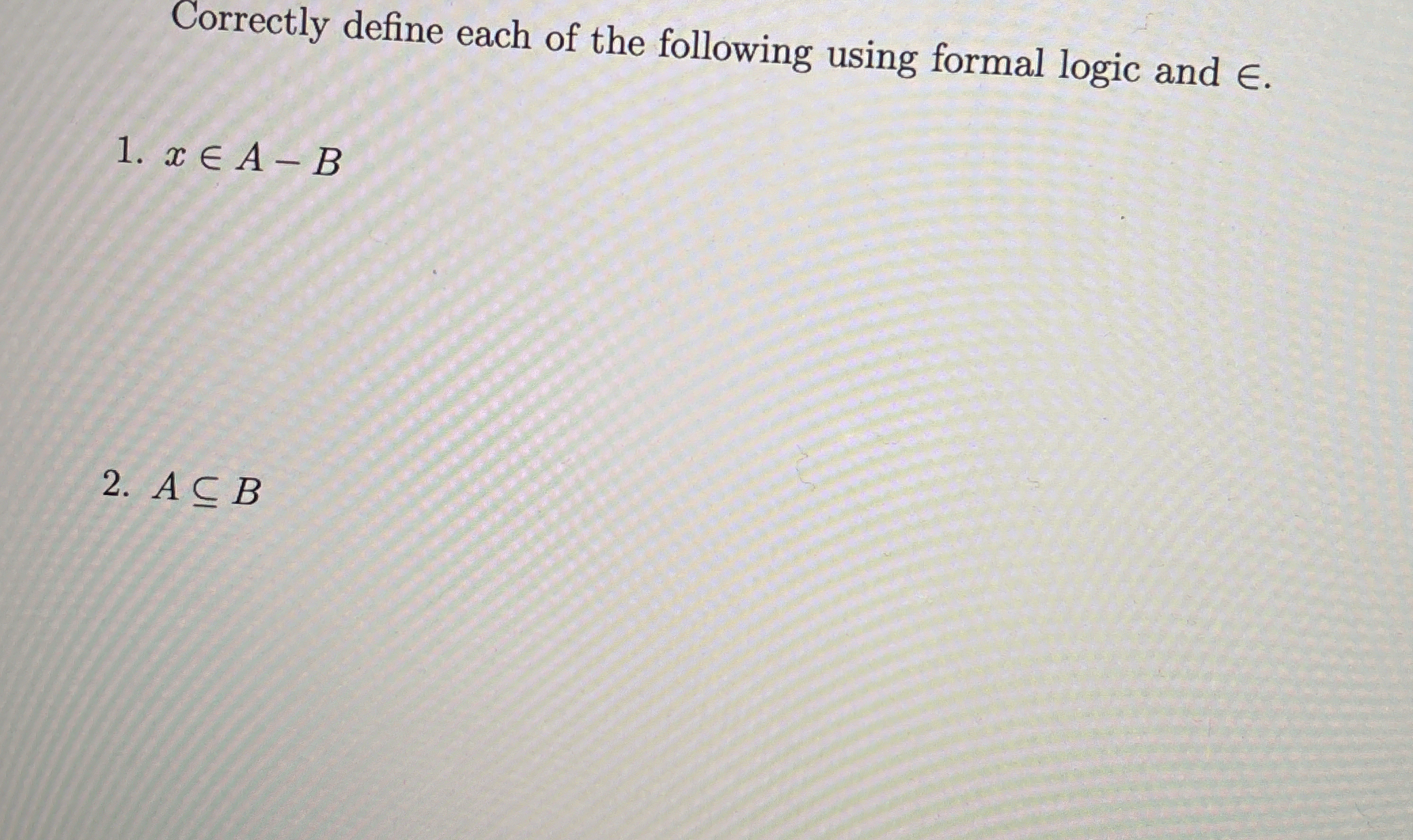Correctly define each of the following using formal logic and ∈. 1. x ∈ A - B 2. A ⊆ B

Understand the Problem
The question is asking to define two mathematical expressions using formal logic and the membership relation. It involves set theory concepts, specifically set difference and subset relations.
Answer
1. $x \in A - B \iff (x \in A) \land (x \notin B)$ 2. $A \subseteq B \iff \forall x (x \in A \implies x \in B)$
Answer for screen readers
-
$x \in A - B \iff (x \in A) \land (x \notin B)$
-
$A \subseteq B \iff \forall x (x \in A \implies x \in B)$
Steps to Solve
- Define x ∈ A - B
The expression $x \in A - B$ means that the element $x$ is a member of the set $A$ but not a member of the set $B$.
This can be expressed in formal logic as: $$ x \in A - B \iff (x \in A) \land (x \notin B) $$
- Define A ⊆ B
The expression $A \subseteq B$ means that every element of set $A$ is also an element of set $B$.
This can be expressed in formal logic as: $$ A \subseteq B \iff \forall x (x \in A \implies x \in B) $$
-
$x \in A - B \iff (x \in A) \land (x \notin B)$
-
$A \subseteq B \iff \forall x (x \in A \implies x \in B)$
More Information
These definitions are fundamental in set theory, allowing us to describe relationships between sets clearly. Understanding set difference and subset relationships is essential in mathematics and logic.
Tips
- Confusing the set difference $A - B$ with the intersection $A \cap B$. Remember that set difference excludes elements found in the second set.
- Misinterpreting the subset notation; $A \subseteq B$ implies all members of $A$ are in $B$, not necessarily vice versa.
AI-generated content may contain errors. Please verify critical information